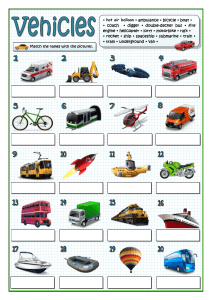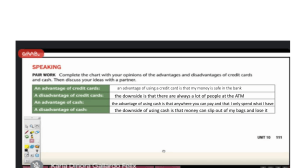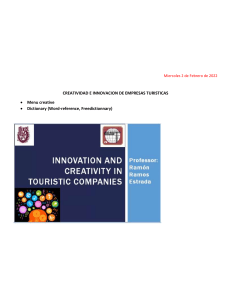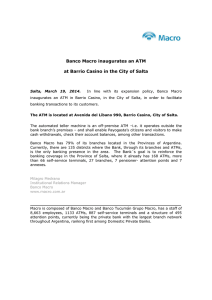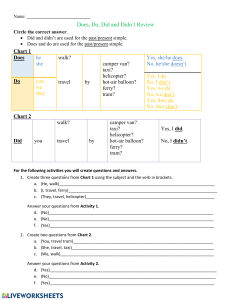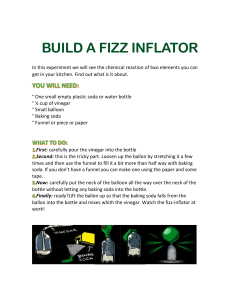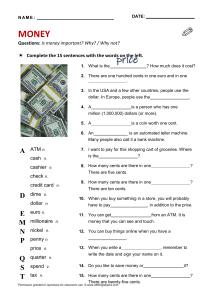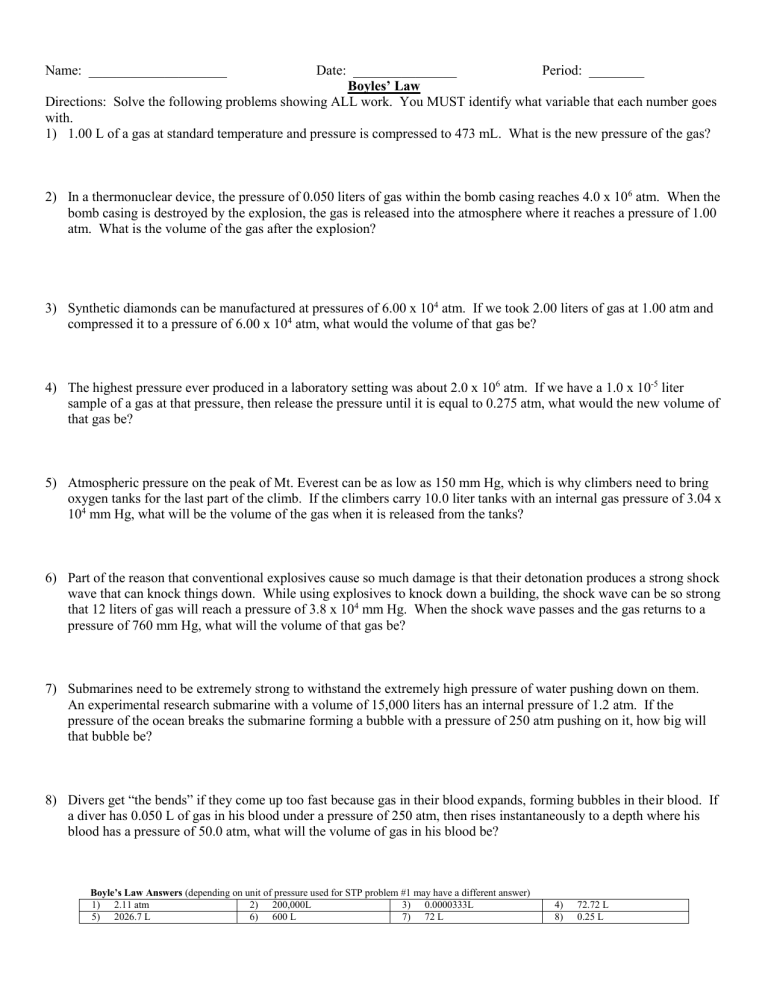
Name: ____________________ Date: _______________ Period: ________ Boyles’ Law Directions: Solve the following problems showing ALL work. You MUST identify what variable that each number goes with. 1) 1.00 L of a gas at standard temperature and pressure is compressed to 473 mL. What is the new pressure of the gas? 2) In a thermonuclear device, the pressure of 0.050 liters of gas within the bomb casing reaches 4.0 x 106 atm. When the bomb casing is destroyed by the explosion, the gas is released into the atmosphere where it reaches a pressure of 1.00 atm. What is the volume of the gas after the explosion? 3) Synthetic diamonds can be manufactured at pressures of 6.00 x 104 atm. If we took 2.00 liters of gas at 1.00 atm and compressed it to a pressure of 6.00 x 104 atm, what would the volume of that gas be? 4) The highest pressure ever produced in a laboratory setting was about 2.0 x 106 atm. If we have a 1.0 x 10-5 liter sample of a gas at that pressure, then release the pressure until it is equal to 0.275 atm, what would the new volume of that gas be? 5) Atmospheric pressure on the peak of Mt. Everest can be as low as 150 mm Hg, which is why climbers need to bring oxygen tanks for the last part of the climb. If the climbers carry 10.0 liter tanks with an internal gas pressure of 3.04 x 104 mm Hg, what will be the volume of the gas when it is released from the tanks? 6) Part of the reason that conventional explosives cause so much damage is that their detonation produces a strong shock wave that can knock things down. While using explosives to knock down a building, the shock wave can be so strong that 12 liters of gas will reach a pressure of 3.8 x 104 mm Hg. When the shock wave passes and the gas returns to a pressure of 760 mm Hg, what will the volume of that gas be? 7) Submarines need to be extremely strong to withstand the extremely high pressure of water pushing down on them. An experimental research submarine with a volume of 15,000 liters has an internal pressure of 1.2 atm. If the pressure of the ocean breaks the submarine forming a bubble with a pressure of 250 atm pushing on it, how big will that bubble be? 8) Divers get “the bends” if they come up too fast because gas in their blood expands, forming bubbles in their blood. If a diver has 0.050 L of gas in his blood under a pressure of 250 atm, then rises instantaneously to a depth where his blood has a pressure of 50.0 atm, what will the volume of gas in his blood be? Boyle’s Law Answers (depending on unit of pressure used for STP problem #1 may have a different answer) 1) 2.11 atm 2) 200,000L 3) 0.0000333L 5) 2026.7 L 6) 600 L 7) 72 L 4) 8) 72.72 L 0.25 L Name: ____________________ Date: _______________ Period: ________ Charles’ Law Worksheet Directions: Solve the following problems showing ALL work. You MUST identify what variable that each number goes with. 1) The temperature inside my refrigerator is about 4.00 Celsius. If I place a balloon in my fridge that initially has a temperature of 220 C and a volume of 0.50 liters, what will be the volume of the balloon when it is fully cooled by my refrigerator? 2) A man heats a balloon in the oven. If the balloon initially has a volume of 0.40 liters and a temperature of 20. 0C, what will the volume of the balloon be after he heats it to a temperature of 250 0C? 3) On hot days, you may have noticed that potato chip bags seem to “inflate”, even though they have not been opened. If I have a 250 mL bag at a temperature of 19 0C, and I leave it in my car which has a temperature of 60.00 C, what will the new volume of the bag be? 4) A soda bottle is flexible enough that the volume of the bottle can change even without opening it. If you have an empty soda bottle (volume of 2.0 L) at room temperature (25 0C), what will the new volume be if you put it in your freezer (-4.0 0C)? 5) Some students believe that teachers are full of hot air. If I inhale 2.2 liters of gas at a temperature of 18 0 C and it heats to a temperature of 380 C in my lungs, what is the new volume of the gas? 6) How hot will a 2.3 L balloon have to get to expand to a volume of 400. L? Assume that the initial temperature of the balloon is 25 0C. 7) I have made a thermometer which measures temperature by the compressing and expanding of gas in a piston. I have measured that at 100.0 0 C the volume of the piston is 20.0 L. What is the temperature outside if the piston has a volume of 15 L? What would be appropriate clothing for the weather?
